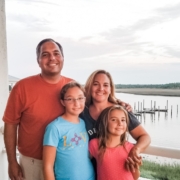The silver age of cannabis: THC, CBD, and healthy aging
The conversation around cannabis has evolved dramatically over the past few decades from the days of “Reefer Madness” to the present, where governments and the medical establishment have accepted cannabis as a legitimate therapeutic tool, including in pharmaceutical drugs like Epidiolex and Marinol.
Nowhere is this shift more evident than in the demographic that’s embracing cannabis at a fast rate: older adults. According to a December 2023 study published in Cannabis and Cannabinoid Research by a team from the University of Michigan Institute for Healthcare Policy and Innovation, Americans aged 50-80 use cannabis now more than before the pandemic, with 12 percent saying they’ve consumed a THC-containing substance in the past year and 4 percent saying they do so multiple times a week.
According to a 2022 federal survey of more than 2,000 individuals, eight percent of people 65 and older reported having used cannabis in the past year—a rate that has doubled in the last seven years. In the slightly younger 60-64 bracket, more than half reported using cannabis. These statistics make their cohort the most cannabis-curious in the United States, eclipsing that of even teenage Americans.
(There also was this groundbreaking study in 2020.)
With this growing body of research and an even more extensive collection of anecdotes, cannabis is becoming a staple in people’s aging toolkits. Like with any medical tool, cannabis use comes with benefits and risks, only due to decades of federal prohibition resulting in a lack of formal research and a relative lack of use compared with younger people; researchers, clinicians, and patients alike are not entirely sure what those are.
Dr. Alison Moore, professor of medicine at the University of California, San Diego (UCSD), and Director of the Stein Institute for Research on Aging and Center for Healthy Aging, has long been curious about the potential of cannabis in treating the ailments of aging. Dr. Moore credits her patients with her growing body of research.
“I got interested in this topic because of my patients,” she explains. “They were coming to me saying, ‘Do you know anything about cannabis? Could it help me with pain? Could it help me with sleep?’ Those are the two main things they were asking about.”
Indeed, pain and sleep disturbances are among the most common complaints in older adults, and traditional treatments sometimes come with a host of side effects that can be particularly harmful to this population. Dr. Moore points out that while there is a growing interest in cannabis as an alternative, the evidence supporting its efficacy is still emerging. “I don’t think there is a huge body of literature saying that it is conclusively helpful for a lot of things,” she notes, emphasizing that much of what we know comes from anecdotal evidence rather than robust clinical trials.
Despite the lack of conclusive data, Dr. Moore sees potential in cannabis, particularly as a safer alternative to more dangerous substances like opioids and benzodiazepines.
“I personally do feel … that it potentially could be a safer alternative than the existing prescription medications we use, or even non-prescription, for sleep, pain, and anxiety,” she says.
The keys to safe cannabis consumption, Dr. Moore stresses, are in formulation, dosage, and method. She will never recommend smoking, opting for edibles or tinctures instead. She often recommends starting with a low dose of THC (a “low dose” is clinically designated at 2.5 milligrams) for sleep, and advises caution in dosing to avoid the common pitfall of taking too much too quickly since it can take up to two hours for edible THC to take effect in patients.
Cannabis has many benefits for people struggling with sleep and pain, but Dr. Moore highlights the complexities involved in using cannabis among older adults specifically.
“It really is context-dependent on whether it’s a potentially a good or bad thing for an individual to use another substance in the context of their other medications,” she explains. Many older adults are already taking multiple prescriptions, which can interact with cannabis in as-yet unpredictable ways.
This sentiment is echoed by Dr. Igor Grant, director of the Center for Medicinal Cannabis Research at UCSD, and director of the HIV Neurobehavioral Research Program at the same university. He has spent decades studying the neuropsychological effects of various substances, including cannabis. He emphasizes the importance of understanding the unique effects that cannabis can have on the aging brain.
“Older people, particularly people who may have some compromising conditions already [e.g., Alzheimer’s disease or another form of dementia], may be more sensitive to even small doses,” he cautions, referring to issues of cognitive impairment from acute THC ingestion.
Dr. Grant also points out that the research on cannabis and aging is still in its infancy.
“This is a very much a nascent field,” he says. “A lot of the research on possible medical benefits of cannabis has been done in younger or mid-years people who might have been in good general health, other than whatever it is that was being treated.”
The result of this, according to Dr. Grant, is that people are left with a significant gap in our understanding of how cannabis might affect older adults, particularly those with existing health conditions.
For this reason, one of the most challenging aspects of cannabis use in older adults is balancing the potential benefits against the risks. Dr. Grant highlighted this dilemma when discussing the use of cannabis in patients with Alzheimer’s disease or other forms of dementia.
“There is just a tiny bit of evidence suggesting that maybe using small doses of THC, CBD, or some combination of both to manage the behavioral symptoms of dementia actually helps; that’s an area I think that should continue to be looked at,” Dr. Grant says, quickly adding that this must be weighed against the risk of further cognitive impairment at the time of dosing. He also says it’s not likely that therapeutic, low-dose cannabis use will bring on cognitive decline where it wasn’t already present.
“The permanent brain damage thing, you can put that away. The harms are more regarding acute effects and all the things that could change in a person’s physiology temporarily, impairing their consciousness or coordination and causing an accident,” Dr. Grant says.
As for other risks, Dr. Moore and Dr. Grant both express concern about the potential for acute effects like hypotension, confusion, or impaired coordination, particularly in older adults who may be new to cannabis.
“An elderly driver who maybe took a little bit of cannabis… might be an unsafe driver as a result,” Dr. Grant warns, noting that older adults may be more susceptible to these side effects than younger users with higher tolerance or more experience.
Moreover, the administration method is another critical factor in determining safety for older adults. Both experts agree that ingesting cannabis, like through edibles or tinctures, has a different pharmacological profile compared to inhaling it, which includes smoking (an act that both doctors discourage). Eating cannabis edibles can lead to delayed onset of effects and a higher risk of unintentional overconsumption.
Despite the challenges, both Dr. Moore and Dr. Grant are cautiously optimistic about the role that cannabis might play in the future of geriatric medicine. Dr. Moore is particularly interested in how cannabis might offer a safer alternative to more harmful medications.
“We know that benzodiazepines… can lead to falls and increased risk for cognitive impairment, and we know the same for opioids, as well as addiction potential for both,” she says. She acknowledges that while using cannabis is not exempt from addiction potential, it is widely accepted to be safer. “I figure even if we don’t have great understanding of this yet, they’re particularly helpful. I think we honestly do know that they aren’t harmful if taken in certain ways.”
Dr. Grant, meanwhile, sees potential in ongoing research but stresses the need for more studies specifically focused on older adults. He explains that low doses of THC are effective in managing neuropathic pain without causing the intense intoxication that higher doses might, offering older adults pain management avenues apart from traditional pharmaceutical drugs.
And, he adds, there is that glimmer of hope regarding potential benefits for behavioral effects of Alzheimer’s and other dementias.
Dr. Grant encourages older adults who are interested in trying cannabis to consult with a healthcare provider who has experience in this area. “I think it would be worthwhile for a person with those questions to consult somebody who has seen a lot of patients [using cannabis],” he advises, referring to specific “cannabis physicians.”
As the use of cannabis among older adults continues to rise, it’s clear that this is a topic that warrants further study. The potential benefits of cannabis in managing pain, sleep, anxiety, and even some behavioral symptoms of dementia are intriguing, especially for a population grappling with the devastating effects of these diseases with little relief in the way of cognitive or behavioral improvement. Included in a new evaluation of the benefits also extends to the risks, particularly for those who are new to using cannabis or have existing health conditions.
For older adults considering cannabis, it’s similar advice from both Dr. Moore and Dr. Grant: aging patients interested should start low, go slow, and consult with a knowledgeable healthcare provider. Cannabis may well become a valuable tool in the quest for healthy aging, but the conversation is just beginning.
This article has been factchecked. For more about that process, click here.









